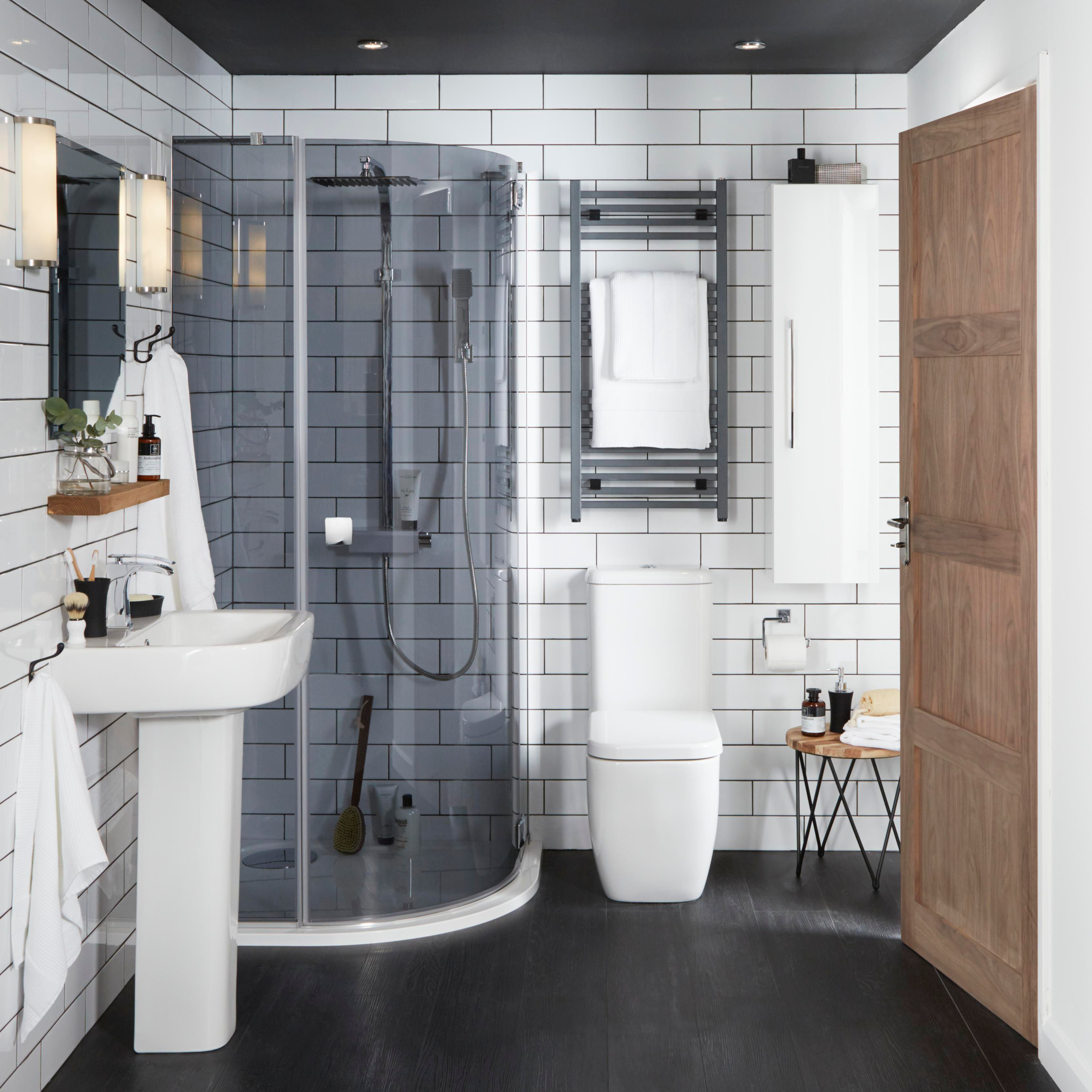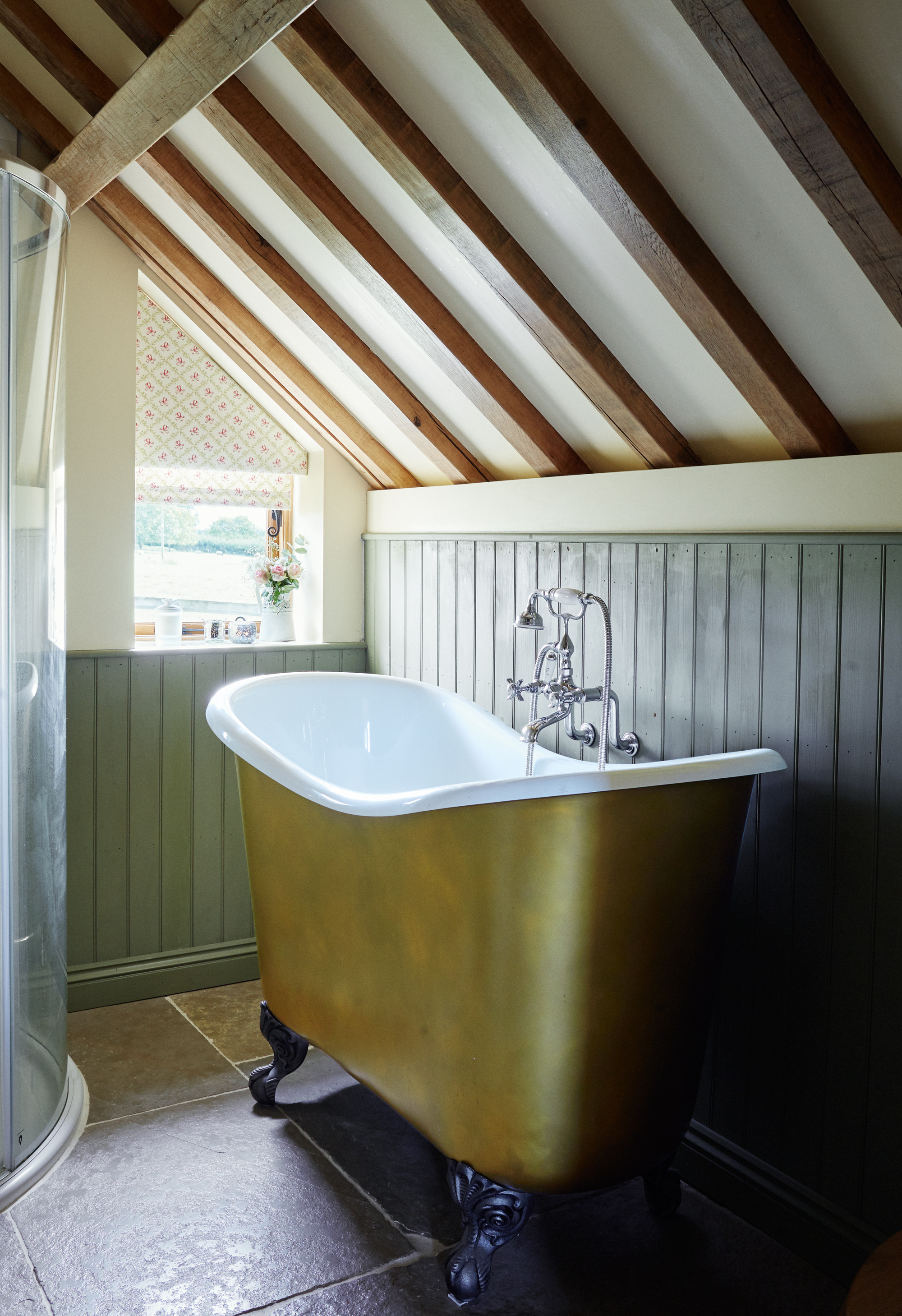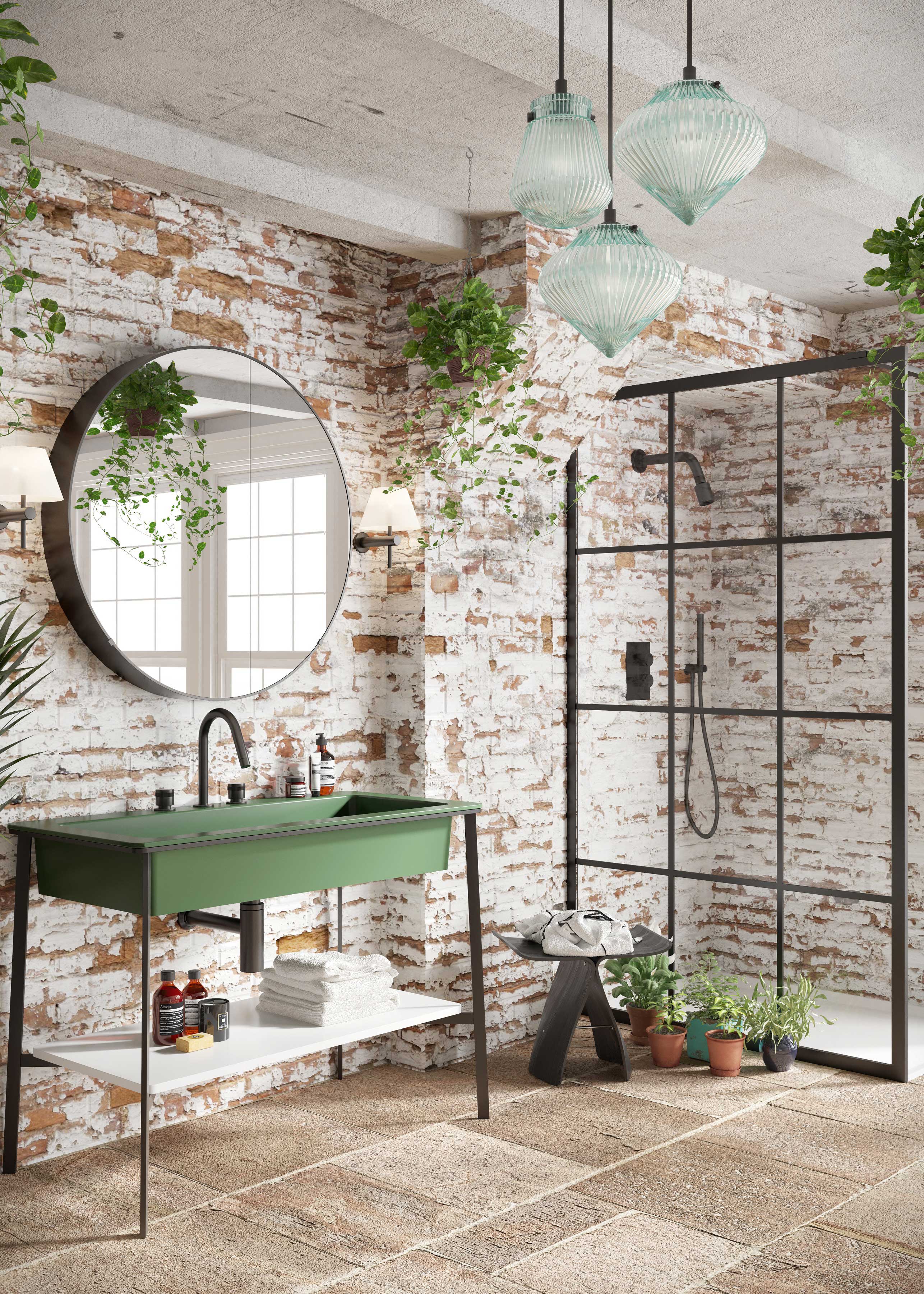Plumbing problems: 13 solutions to common plumbing issues
Need advice on tackling plumbing problems? We've got tips on everything from blocked drains to exposed pipework

Common plumbing problems are usually easier to solve than you think – although it really pays to know the difference between an easy-fix problem and one that requires a professional plumber. Whether you're working on a remodel and have discovered some underlying issues with your pipework; have learnt that your dream bathroom is not possible because of pipework limitations; or have already picked out the perfect bath without knowing if it's a feasible fit for your space, we're here to offer solutions for each of your plumbing woes.
Installing bathroom plumbing often comes as an afterthought during the design process when putting all your bathroom ideas into practice. But really, it should be at the top of your list, along with the most important decisions that you make. Follow our top 10 tips and tricks for resolving common bathroom problems and create your dream space with ease.
1. Exposed bathroom pipework is ruining the look
Visible pipework can be an eyesore in a new bathroom, but early planning can help you find a solution whether you are updating or fitting a brand new bathroom.
Although it’s likely that tiles will need to be removed, it is essential to chase out walls and lift floors to hide hot and cold plumbing and waste pipes if you want a high-quality, clutter-free finish. Where pipework can't be concealed in the walls, or ceilings, you can box it in. Some bathroom furniture, will also cover pipes.
Waste pipes tend to be positioned on outside walls, so when planning your new bathroom take this into consideration. Banking the toilet, sink and bath/shower together helps keep pipework in one area, but don't do this to the detriment of usability.

A well-designed bathroom depends on well-planned plumbing. The Affini range from B&Q features toilets and basins
2. Small bathroom plumbing problems are hampering the design
Small spaces can make plumbing a logistical nightmare. Not only does the plumber need room to work, but they also require plenty of room for the fittings they are using.
Plastic fittings can be easier to retrofit because the flexible pipe can be threaded through joists and around corners, without needing joints. Adaptors from copper to plastic are available to extend existing systems. Plastic is also quicker to fit than copper, resulting in lower labour costs.
Get small space home decor ideas, celeb inspiration, DIY tips and more, straight to your inbox!
3. Waste pipe fall problems are ruining the new layout
Waste pipes need to be installed sloping down to ensure the water runs the right way. This needs to be a minimum of 10mm fall for every 4m of pipe which can lead to insufficient fall within the floor void under baths or showers (especially under low-level or flush shower trays).
In this case consider raising the floor level to create a void. You could run the waste between and below joists, boxed in at ceiling level in the room below. Or, where this is not an option, consider building a plinth to raise the bath or shower above floor level and hide the pipework below. This can make more of a feature of the space too.

The toilet and bath in this family bathroom are installed on a plinth, neatly obscuring all plumbing
4. Multiple pipes in an older home are complicating the work
It’s a good idea to put isolation valves on every pipe so that they can be shut off for maintenance. This enables you to make changes or fixes without the whole bathroom being out of order.
Valves can be inline, but the neatest solution is to have a single hot and cold manifold, with individual and master shut off valves located behind a removable panel for easy access.

5. Plumbing in awkward spaces is limiting your bathroom remodel
Looking to add a bathroom or WC in a part of your home that is too far from the main drain? Or maybe you have recently converted a basement and are facing the complications of installing a loo where gravity is working against the waste pipe?
Ideally, all new bathrooms will be connected to a 100mm soil pipe, but where this is not possible, a flexible small-bore waste pipe and a pump with a macerator will allow a bathroom to be fitted in even the smallest or most awkward to reach of spaces.
Find more small bathroom ideas in our feature.
6. Water is not draining in a power shower
Standing water in your shower tray is the first sign that your drain might be blocked. If this is not the case, check that the waste pipe width is sufficient for the increased volume of water from a more powerful shower.
For a very large showerhead or a power shower, use a 50mm waste pipe rather than the standard 40mm size, to cope with the high flow rate. This should see off any previous issues with a slow draining shower.
Read more on choosing a shower.

A spacious and powerful shower can be as luxurious as a long soak in the bath. This design features a frameless glass screen from Impey
7. Try these cleaning hacks to tackle smelly drains
Smelly drains are another sign of a blockage. In the first instance, unblock the sink or drain in question.
Using Baking soda to tackle smelly drains
Using nothing more than baking soda and white vinegar – and a handy tool if you're tackling a drain full of hair – we'll help you rid your space of drain smells without the need for harsh chemicals. We can't promise that the experience will be pleasant. But, we can promise that you'll feel physically and emotionally triumphant once it's done. So, let's get to it. Gas masks on, people...
1. Simply pour baking soda down your plug hole – this works in either the kitchen or bathroom – and leave it to work its magic for 30 to 40 minutes. Don't be afraid to be liberal with the baking soda, better too much than too little.
2. Then, pour a good glug of white vinegar down the drain and leave for another 15 minutes. You should hear a little fizzing, this should not alarm you. When times up, pour a kettle full of boiling water down the drain.
Top tip: if the cause of your smelly drain is a build up of hair, shampoo and the like, baking soda may not be enough to cast out the bad smells for good. We'd recommend investing in a drain cleaning snake, which will help you remove any blockages and drastically reduce any smells.
Using sulphuric acid to tackle smelly drains
Disclaimer: only use this method if nothing else has worked, and only while wearing protective gloves and goggles, and following manufacturer's instructions. Not comfortable? Call in that plumber.
Sulphuric acid is corrosive and will literally melt away anything stuck to your pipework. It is safe to use with plastic pipework; sulphuric acid-based drain cleaning products vary in strength from 45 to 95 per cent, with the strongest usually only available for sale to tradespeople.
Always follow instructions on the packaging, and don't use too much of the acid – a little really goes a very long way with this stuff. Make sure children/pets are not around when you're cleaning the drains with sulphuric acid.
If the blockage is severe, you may need to perform the cleaning several times over the course of a couple of weeks before the smell is gone. If the smell is still there after sulphuric acid treatment, you will need to call in a plumber.
8. Call in a plumber to tackle serious drain blocakges
If you are still having issues, a blockage might not be the problem and it is time to call a plumber.
Where the run of waste pipe is more than 2m, the displaced waste water can pull air from nearby waste traps instead of from the vent pipe, siphoning the water seal, creating a gurgling sound and releasing drain smells.
This can be avoided by having anti-siphon valves or anti-siphon traps fitted in the waste traps. If you are at the design stage, you might also want to consider arranging sanitaryware to keep the waste pipe as short as possible.
9. Low water pressure ruins shower time
Before you choose a shower, check the pressure on your hot and cold supply – many shower and tap mixers require 3-bar or more, and won’t suit a traditional gravity-fed (header tank) system. The result would be a weak, unsatisfying shower.
A shower head for low water pressure systems can help, but won't solve the problem. Instead, you need to consider the alternative.
One is to fit a pump to boost the mains water pressure from a gravity-fed system. Good pumps costs from around £100 and will need to be fitted by an electrician. Alternatively swap to a high-pressure electric shower (more on this below), or if you still want a mixer shower, check that your combi-boiler can deliver adequate hot water flow rate.

10. Hot water takes ages to reach the tap
If the bathroom is on the end of a long plumbing run, hot water can take ages to arrive. You could connect the end of the run back to the hot water cylinder and fit a bronze pump on the loop so hot water circulates (a timer will save energy). Taps will then run hot instantly when opened.
11. Boiler is too low pressure for a new shower
If you are adding a new shower in the bathroom, but your existing combi boiler lacks sufficient hot water flow or pressure, consider fitting an electric shower that heats its own hot water on demand, fed by water direct from the rising mains.
Don't forget you will need to find a registered electrician for the job, as well as a plumber.
12. How to unclog a toilet without a plunger
Whether you've got a funny tummy, or a funny toilet (a likely story) we've all experienced the agony of discovering the toilet is blocked just moments before friends, family, or that new boyfriend you're desperate to impress are due to arrive at your home. And to top it all off, you don't have a plunger.
Fear not, folks, we're here to help. Using nothing but warm water and washing up liquid, we'll teach you how to unclog a toilet without a plunger. And if that doesn't do the job? We'll teach you how you can use a hanger to get things moving along. This won't be fun, but it will be effective...
You will need:
- Washing up liquid
- Warm water – avoid boiling water as this may cause your toilet basin to crack
- An unravelled hanger (for really sticky situations)
How to:
1. Squirt a good amount of washing up liquid down the toilet. If you're panicking, we'd say it's always better to use too much, than too little. Leave it to sit for up to 10 minutes – this should help lubricate your pipes and flush away the blockage.
2. Pour warm water – not boiling – down into the bowl and wait for a couple of minutes. If all goes well – we're crossing our fingers for you – you may begin to notice the contents of your toilet blockage breaking up. Enough said.
3. Try flushing the toilet. If you're still facing a blockage, repeat the previous steps a few times.
4. No luck? Desperate times call for desperate measures. Unravel a wire hanger, grab a stick from the garden, or sacrifice a wooden spoon and try to help things along. May the force be with you.
13. How to fix a dripping tap
A dripping tap is a very common plumbing problem that fortunately is quite easy to fix on a DIY basis. The problem is usually the washer – or, in monobloc taps, the cartridge, and will need replacing. You'll just need to turn off your water main, unscrew the tap, disassemble it, and replace the washer/cartridge. Find out how to fix a dripping tap in more detail in our guide.
More bathroom know how:
Anna is a professional writer with many years of experience. She has a passion for contemporary home decor and gardening. She covers a range of topics, from practical advice to interior and garden design.